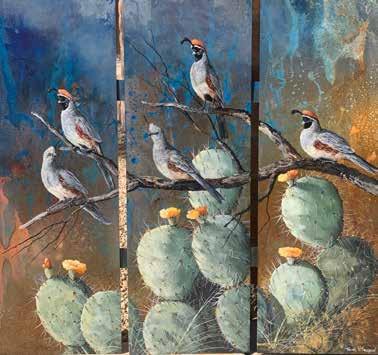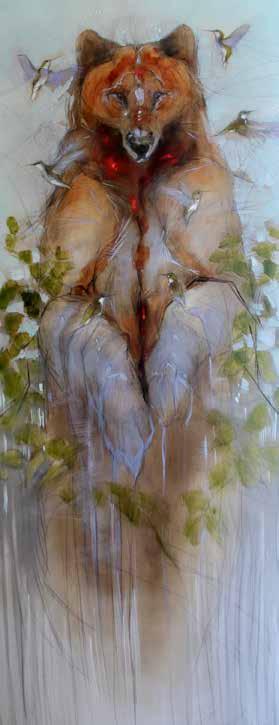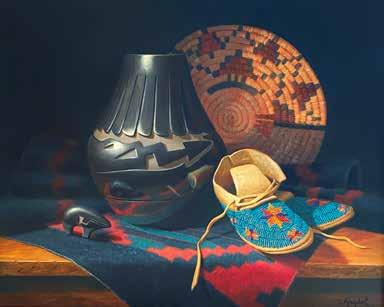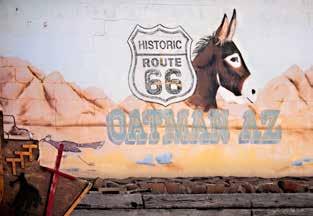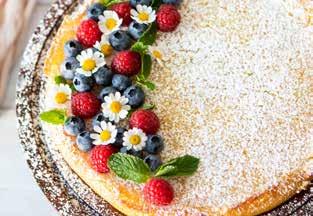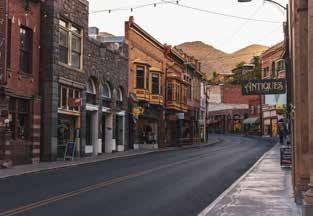
2 minute read
History and Tradition of the Wedding Vase
BY SUE KRZYSTON
I am often asked how I decide what artifacts to use for one of my compositions. I have a large collection of pottery, baskets, rugs and beadwork at which I look until a piece speaks to me.
Advertisement
For example, as I was composing “Beauty and Meaning,” this wonderful wedding vase created by Reylita Naranjo from Santa Clara Pueblo in New Mexico grabbed my attention. I immediately knew that I wanted to portray the piece’s elegance and history.
Originally, for a Native American wedding ceremony, the groom’s parents would fashion a wedding vase from local clay, usually from a river bank. They used a technique of building the vase with coils of clay, then smoothing the surface with a special stone rather than using a pottery wheel. They would then incise a pattern into the surface. In this particular pot, the carved patterns are Kiva steps, representing spirituality, and a water serpent, signifying the importance of water to the people.
The piece would then be fired in an open pit in the ground, which is what gives these wedding vases their distinctive black color. Their surface would then be smoothed and polished with a special flat stone that, oftentimes, would be handed down through many generations of potters.
There is much symbolism in the shape of the wedding vase. Just as the bride and groom are two individuals who are being joined into one, there are two separate flutes, joined by a handle, with the two parts becoming one in the bowl. The space between the flutes is often symbolic of the circle of life.
During the wedding, the bride and groom take turns drinking nectar, tea or water from the vase. Sometimes, they both drink at the same time — which seems pretty tricky and would take a lot of coordination. There is no wonder why it is said that if no drops are spilled, the married couple will have a long, happy life together.
To highlight this elegant vase in my painting, I placed a Hopi coiled plate behind it and used the lighting to cast the vase’s shadow onto it. Since this black pottery has its own wonderful glow but also reflects, I placed it on a richly colored, patterned Navajo blanket and added the beaded sash to reflect the patterns into the bowl of the vase. I then added the small Santa Clara pot to the right for balance.
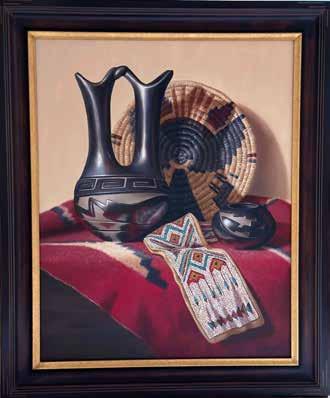
To achieve the glow and 3D effect that I try to capture in my oil paintings, I apply several glazes to the pot and blanket, resulting in a translucent glow when light travels through the layers and reflects back. The realism of the beadwork requires me to hand-paint five or six layers of oil paint in every bead and then add a small highlight to each of them. For the basket, I under-paint to tone the white canvas and then paint each fiber individually with a small brush before adding a highlight and shadow to each of them.
While painting this elegant piece, I pondered the significance and history of the wedding vase and it occurred to me that this painting — “Beauty and Meaning” — would make a truly special wedding or anniversary gift.
Beauty and Meaning, oil. 30” by 24”
